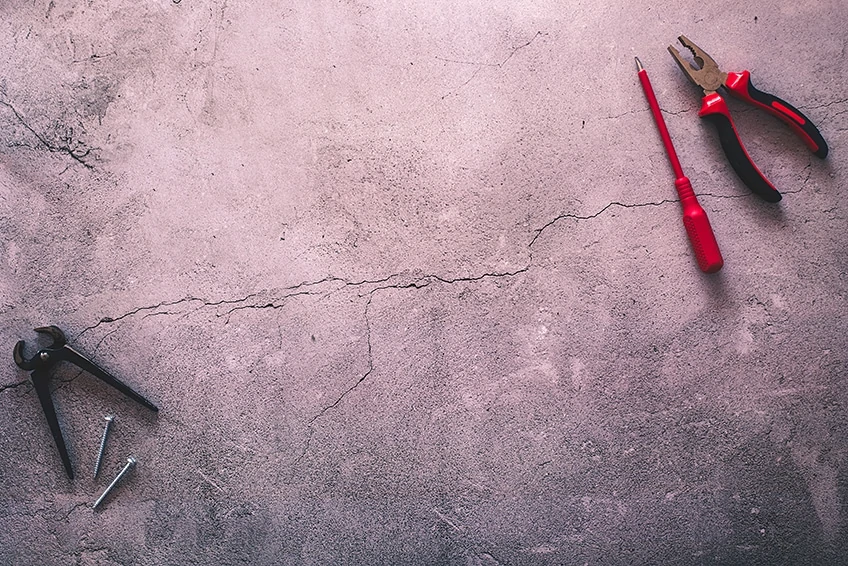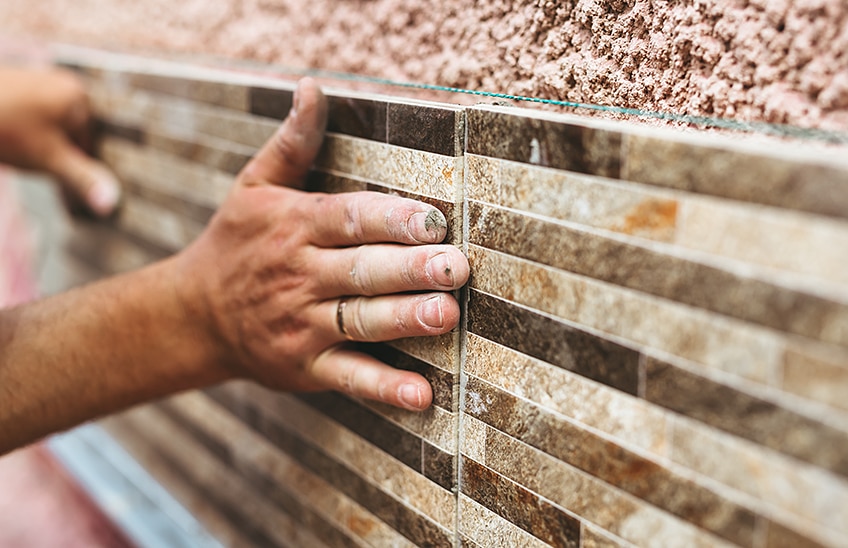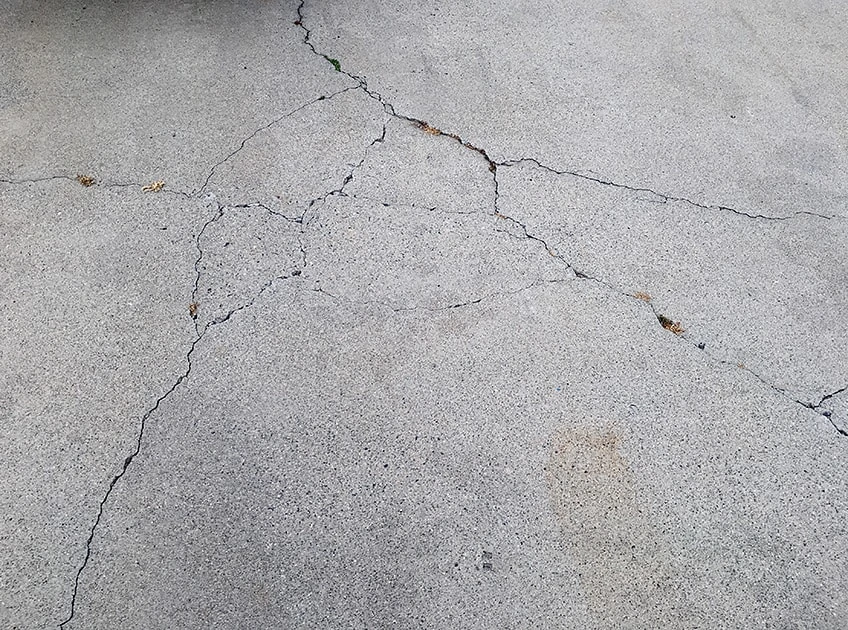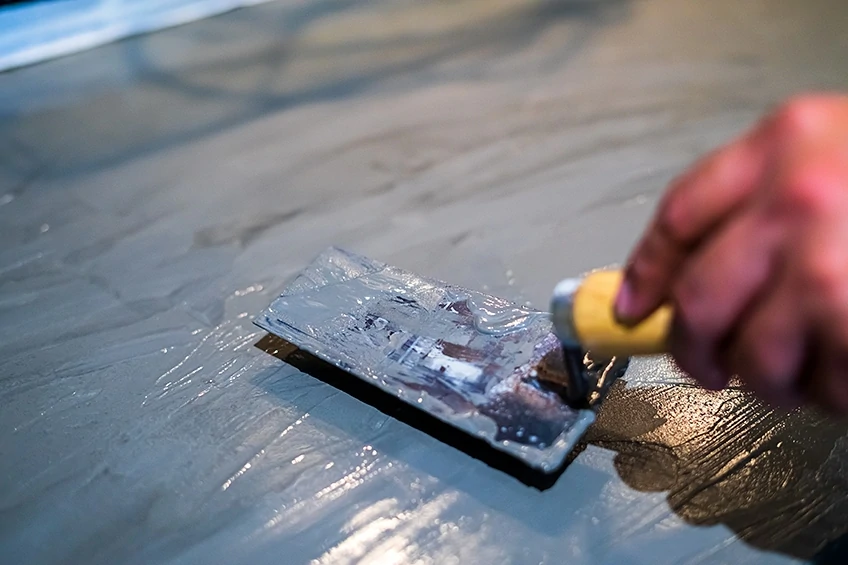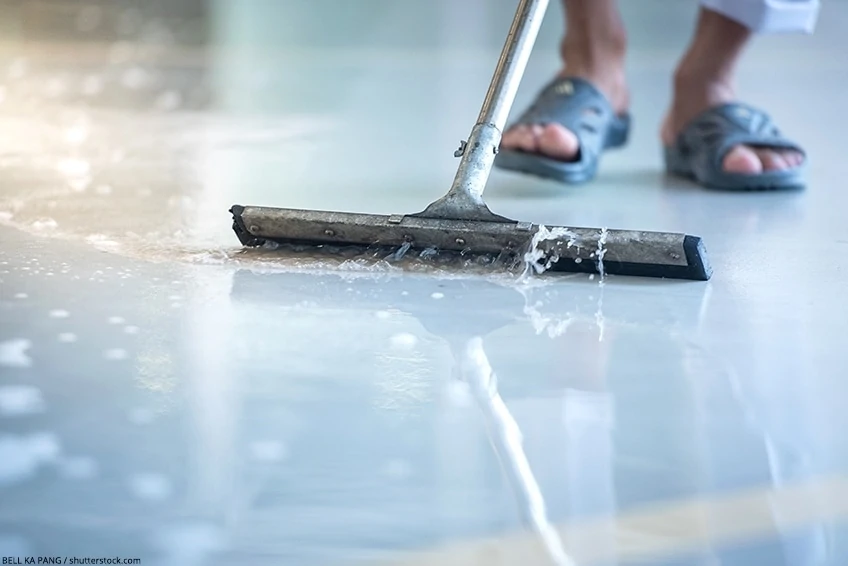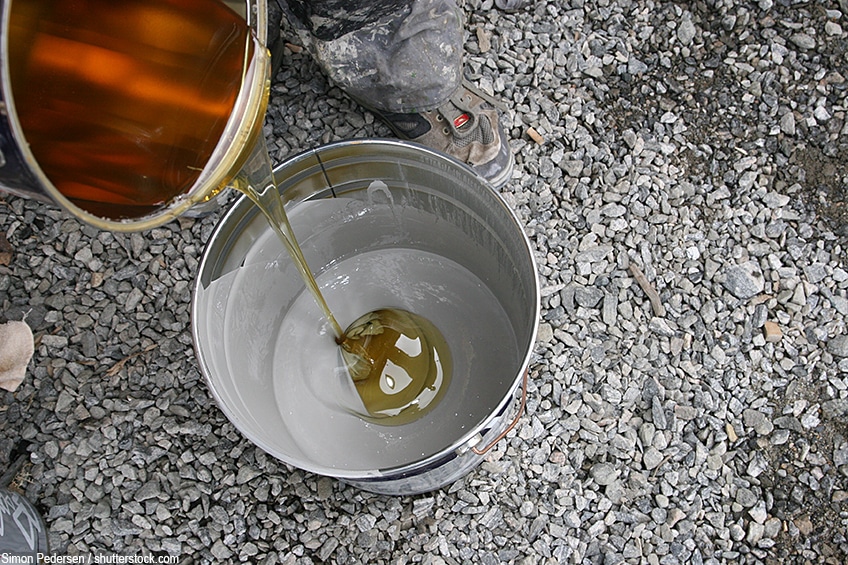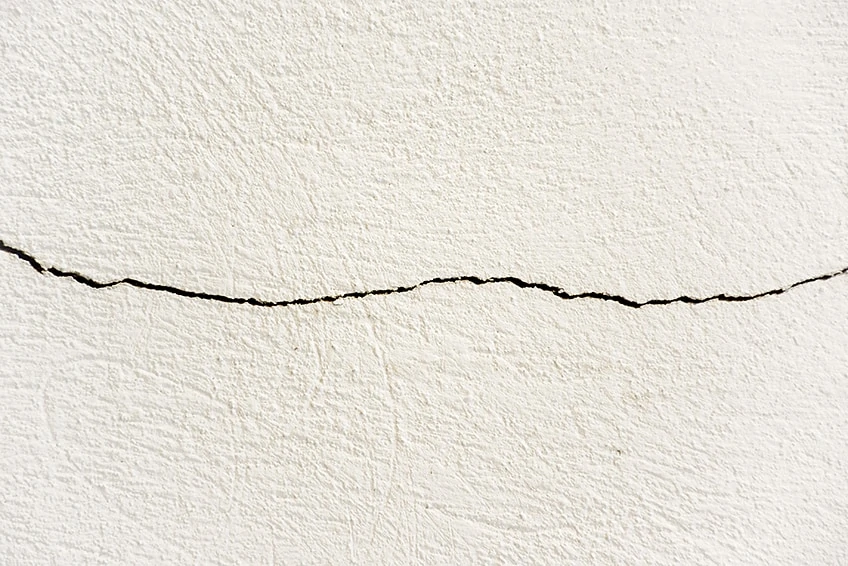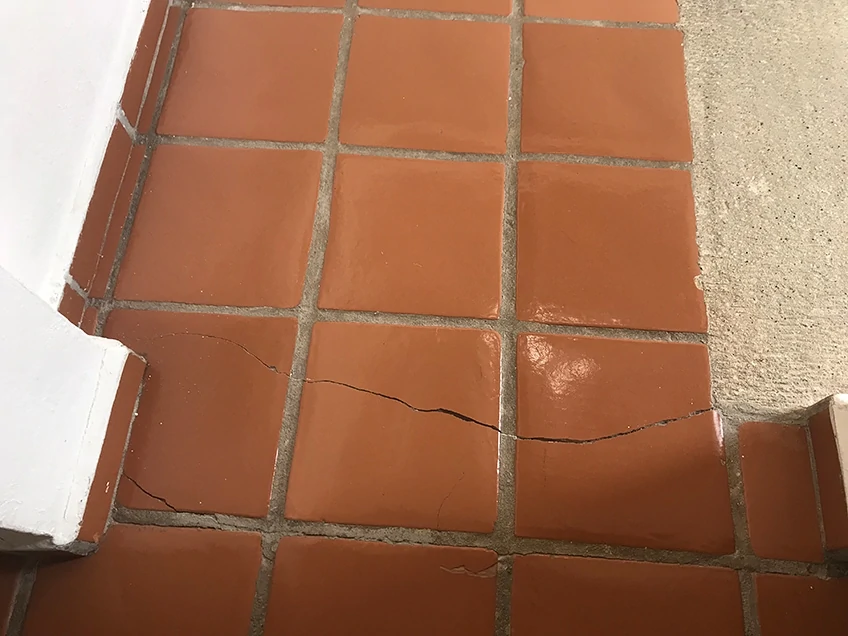Epoxy Cement Guide – Applications and Concrete Repair with Epoxy
This post may contain affiliate links. We may earn a small commission from purchases made through them, at no additional cost to you. You help to support resin-expert.com
Concrete repair epoxy is a method whereby epoxy is combined with cement when making repairs. The cement is then made stronger and will also be stain-proof. When adhering to instructions and following the correct process for repairs, in the end, it will save you a lot of time and money. You can easily make cement epoxy that produces a tidy and durable surface, all while producing minimal waste. You will have a pleasing final result with no need to do anything further.
Table of Contents
- What is Epoxy Cement?
- Epoxy mortar versus epoxy cement
- Guide to epoxy cement repairs
- Epoxy cement versus Urethane Cement
- Introduction to Concrete Crack Repair with Epoxy
- Best Concrete Crack Repair Epoxy
- Concrete Crack Repair Epoxy Applications
- How to Apply Concrete Repair Epoxy
- Helpful Tips for Repairing Cracks
- Tips and Tricks for Concrete Epoxy Repair
What is Epoxy Cement?
First, epoxy is an organic polymer consisting out of two elements, resin and hardener. The cement epoxy goes a bit further by blending coarse aggregate with sand. Either way, an epoxy approach will create a waterproof barrier, which then protects any reinforces steel from deterioration.
Epoxy mortar versus epoxy cement
Epoxy in both cases simply indicates that it is present in both products, adding durability and providing water-resistant properties. When it comes to purpose, both epoxy cement and mortar offer similar effects:
- Bonding and repair of steel plating, tiles, and more.
- Provides reinforcement repairs
- Prevents corrosion
- Offers water-resistant properties
- Helps to smooth out surfaces
The difference comes in composition, epoxy cement contains more of a powder-like filler while the epoxy mortar is a sand-like filler.
You also get an epoxy putty, which also contains a filler, but provides a thicker application and is used as a space-filling putty-like adhesive. It is not the same as epoxy or mortar cement.
Guide to epoxy cement repairs
Epoxy cement floor repairs for a sidewalk
When the sidewalk has a crack that is quite wide and not just a thin line, it must first be enlarged by using a cold chisel and a hammer. This process involves undercutting, where the crack should be made wider at the bottom than at the top. Once this is done, take a wire brush to remove any residue and hose the area down before moving on to the next step.
You can then apply an acrylic resin adhesive and leave this to dry. Next, apply a pre-mixed concrete patch onto the undercut space. Make sure to smooth out the mixture by using a trowel. While the cement is still wet, cover it up until it dries out and then leave a plastic sheet over the area for at least five days.
Epoxy cement floor repairs for your driveway
Follow the same steps as for the sidewalk, but since this surface experiences more weight, you should repair it with a little more strength. In this case, a gravel composition is best and can be done by combining sand, cement, and gravel.
Undercut the damaged area and apply cement repair adhesive. Follow the same steps as for the sidewalk repairs and leave covered for at least 5 days before driving on it. Add epoxy for a stronger and more durable Epoxy cement floor.
Concrete crack repair epoxy
Epoxy cement floor repairs for hairline cracks. Begin the process by combining water and cement to form a paste. Moisten the crack with water about 4 hours in advance, then apply the paste. The area should be dry before applying the cement paste, then using a pointed trowel cover the crack with the paste. You can also use a concrete crack repair epoxy, which is a Two-Part Epoxy Adhesive Paste.
Use a little weight in the application to ensure the paste goes into the crack. Next, even out the surface and leave to dry for around 2 hours. Then cover with a plastic sheet for five days, every day lift the sheet and sprinkle a little water over the area. Once the five days are done, you can remove the sheeting.
Image: bhakpong – stock.adobe.com
Epoxy cement versus Urethane Cement
The two main types to choose from include urethane cement and epoxy cement. In many cases, the decision is easy, you can use both. Both these types of floor coatings each have their own benefits, let us have a look at these separately.
Urethane Cement
This type of floor coating makes use of liquids or polymer urethane combined with normal cement. This mixture then becomes solid. The bond formed between the cement and liquids forms a smooth coating and is also heat and water-resistant.
The urethane cement floor is seamless and, therefore, prevents any chemicals or bacteria from penetrating any seams or cracks. This makes it unaffected by chemicals, which is ideal in an industrial environment.
Epoxy Cement
Using Concrete repair epoxy is another great way for coating concrete floors. The epoxy consists of two ingredients, the resin, and hardener. The epoxy system can easily be instantly and safely applied, making the floor more durable and water-resistant. Your worn-out concrete floor is transformed and will look even better than before.
An added benefit is that epoxy can come in different colors, you can easily include logos or different areas. Epoxy is useful in places such as:
- Epoxy Garage Floor
- Epoxy Concrete Floor
- Hospitals
- Warehouses
- Industrial environments
Can you use both?
Since urethane creates a poor bond with the cement, it would benefit the coating process if epoxy is added. The method of coating will involve first applying an epoxy base coat and then a urethane topcoat. Once this is done, the newly coated floor will last much longer than the original concrete floor. It will offer amazing durability and scratch resistance amongst its other benefits.
Image: bhakpong – stock.adobe.com
The best floor coating is, therefore, the combination of urethane and epoxy. This type of flooring provides protection against heat, moisture, and chemicals, and offers great strength or durability.
Another factor of water-based polyurethane floor finishes is that they are also rather expensive to use especially since many coats need to be applied onto the floor or wooden surface.
However, it is best to ask a professional about your specific needs when it comes to floor coatings, as this mixture may not be the best way to go for all projects. Thankfully, the urethane and epoxy combinations can be customized.
Introduction to Concrete Crack Repair with Epoxy
There are a couple of different ways to fix concrete cracks. While the method depends on how wide and long the cracks are, one of the best ways to do it is to use concrete crack repair epoxy. This is done through an epoxy injection. Cracked concrete is generally a result of heat, shrinkage, too much stress being placed on the concrete, and external movements. Through a simple epoxy injection straight into the cracked area, this issue can be fixed pretty easily.
Of course, each condition is different, and the method of application depends on each specific scenario. We have put together a guide on concrete crack repair epoxy, and how to apply it, in order to help you make these repairs yourself.
Best Concrete Crack Repair Epoxy
There are various options for concrete repair epoxy which can make choosing the right product difficult. You need to choose an epoxy that is strong, easy to use, and offers just the right amount of flexibility and weather-resistance. We have put together our top two picks of epoxy filler for the concrete below.
Overall Best: PC PRODUCTS PC-Concrete Epoxy Adhesive
This two-part epoxy paste adhesive by PC Products has been specially designed for filling cracks in concrete. It can be used to repair cracks or to anchor threaded rods, dowels, and bolts into concrete. The high-tack paste completely resists moisture and can be used in vertical applications.
Thanks to its high level of durability, this paste can be used indoors and outdoors. The adhesive has good weather-resistance properties, and it can withstand high and fluctuating temperatures. This adhesive is extremely strong, with a PSI rating of 6790. It dries quickly, is an attractive concrete grey color, and is very easy to work with.
- Two-part epoxy adhesive paste to fill and repair cracks in concrete
- High-tack paste resists moisture for application in damp environments
- For indoor and outdoor applications from -20 to +115 degrees F
Pros
- Provides an incredibly strong anchor or crack repair
- Withstands high and low temperatures and fluctuations
- Easy to apply
- Very fast drying
- Does not shrink
- A versatile concrete crack repair epoxy
- Provides a long-lasting bond
Cons
- An expensive product
Best Value: QUIKRETE Epoxy Concrete Repair
If you are looking for an effective, durable, and strong epoxy filler for concrete, then this product is an excellent option. This is a two-part epoxy that forms an incredibly powerful bond for filling cracks in concrete and repairing any damages.
This epoxy can be used on vertical cracks and difficult to reach places. The consistency is fairly thick, so there is no need to worry about dripping or making a mess. Once dried, you get a really solid, durable seal. The epoxy can be used indoors and outdoors and is suitable for use on all sorts of concrete finishes.
- Great for smaller cracks and concrete repair applications
- It is suitable as a glue and for repairing cracks and holes
- It bonds and repairs Concrete, Brick, Stucco, Stone, Concrete Block and more
Pros
- Fast drying
- Provides a highly durable concrete seal
- Versatile for many different applications
- Does not shrink
- Suitable for interior and exterior use
Cons
- The thick consistency is quite difficult to apply
- Mixing the epoxy can be challenging
Concrete Crack Repair Epoxy Applications
Cracks that appear in concrete are easily visible. These can go through both ends of the concrete surface and require fixing straight away. Epoxy filler for concrete can then be applied from both ends of the crack. Depending on the scenario, you may need to make the epoxy thinner and easier to flow into the crack.
Sometimes, it is important to inject the concrete filler as close to the crack as possible, and so you will need to go quite deep into the crack. Whatever the situation, the most important thing is that the cause of the crack is resolved. Otherwise, the crack may continue to increase even after the epoxy has been applied.
Concrete crack repair epoxy is not always the solution. There are cases where the concrete crack might be too big, or maybe there is a large amount of water in the crack that cant be removed. For very big cracks, it’s best to consult with an engineer first. Sometimes, the job may involve additional demolition and chipping away of the concrete before it can be filled in. Each situation is unique, and will require a unique solution.
How to Apply Concrete Repair Epoxy
While each scenario is different, there are a few general guidelines to remember when applying concrete filler. Below are some of the necessary steps for fixing cracked concrete.
Preparing the Concrete for an Epoxy Filler
Before applying the concrete epoxy repair filler, you will need to properly prepare the cracked surface. Start by cleaning the complete surface of the crack. This should be done up to half an inch on each side of the crack. You can either use a high-pressure water cleaner or wire brushes to clean the concrete. It’s important to do this thoroughly in order for the filler to adhere properly.
Make sure that the cleaned concrete is completely dry before proceeding. Also, try to avoid the use of mechanical tools for this, as it can result in dust and debris falling into the crack.
When preparing the crack, you have to widen it. This is ideally done in a “V” shape. Doing this will help to create a more resistant finish and filler when the epoxy has been applied.
Adding in the Ports
To take away the need for drilling, concrete crack repair epoxy is injected into the crack using ports. When doing this, you will use a minimum of two ports. These need to be spaced out correctly to ensure the epoxy is injected in the correct area. This should be done around eight inches apart in the crack.
So, first install the ports then seal up the top of the crack. You can use a putty knife to cover the top of the concrete paste. Make sure that this paste is properly dried, and secure enough to hold up against the injection process. Depending on the circumstances, the seal and adhesion strength of the epoxy might be affected due to fluctuating temperatures.
Injecting the Epoxy Filler for Concrete
Take the concrete crack repair epoxy and inject it first into the lowest port. Continue to inject it until the epoxy stops flowing, or when it starts to come out of the next port. If you are working on a horizontal crack. Start at the widest area of the crack. Once no more epoxy is flowing, you can take out the port, and proceed to the next one.
Simply repeat the process on the next port, and continue to do this until the entire crack has been filled in. Just make sure to apply a steady, consistent pressure when applying the epoxy to avoid any uneven fills or holes. Remove all of the ports and seal up the top of the crack with epoxy and a putty knife.
Helpful Tips for Repairing Cracks
As mentioned above, each concrete crack is unique and will require special attention. Sometimes, certain issues may arise that require particular care. Here are some common issues and ways of dealing with them:
- Always start by injecting the epoxy at its lowest pressure setting, and slowly increase this as you progress
- Fill wide cracks slowly, and take some time while injecting the epoxy. This is to make sure that the epoxy is filling the crack completely
- The bigger the crack, the more injection pressure is needed
- Always be aware of epoxy backflow. This could be caused by debris blocking up the flow, or the crack not being continuous
- When you remove the top seal of the epoxy, you can use a scraper or chisel to do this
- Make sure that the epoxy is fully set and sealed before removing the ports. This can take up to 48 hours
- Sometimes the top seal may have a small leak present. This can be fixed up with a crayon
- When working with narrow cracks, you can start by adding a bit of caulk on the side of the crack. This helps to minimize epoxy waste, and it makes the filling and adhesion more efficient
- Epoxy injection isn’t suitable for all cracks – especially very wide ones. Always make sure that the crack is suitable for epoxy repair before you get the crack repair kit.
Tips and Tricks for Concrete Epoxy Repair
Using concrete crack repair epoxy can be a simple process, but it also requires the right knowledge and skills. Before starting to fix your concrete crack, follow these tips and tricks for an easier process.
Surface Preparation is Essential
In order to provide the best long-term strength and success for the epoxy crack filler, surface preparation is vital. Make sure that the concrete surface is properly cleaned, with no residue, dust, or dirt being left behind. This can be done with gentle or aggressive measures, as long as the structure of the concrete is not affected.
If you take a very abrasive method for cleaning, it might leave a layer of dust over the crack. This can be efficiently cleaned off by blasting a pressure sprayer. A shotblast can be the best method for preparing protective coatings. This helps to clean the surface, open the pores, and slightly roughen the surface. It is essential that any surface contaminants, release agents, oils, or curing compounds are completely removed. An abrasive removal can achieve this.
Pressure washing is often a good method to use. Make sure that the pressure cleaner has at leat 5000 PSI.
Since the Loctite Professional Liquid Superglue has only one disadvantage, but several advantages, it is the clear winner for us in our superglue test.
Work Safely
When working with concrete, epoxy, and abrasive cleaning methods, you will need to make sure that you take proper safety precautions. There can be dangerous chemicals involved when using epoxy concrete filler, so you need to make sure to wear the appropriate protective gear. This includes gloves, goggles, and possibly a face mask. Try to also wear long sleeves and long pants. If possible, it is best to work in a space that has maximum air ventilation.
Cleaning Up
After work, you will need to clean up the epoxy from your tools and workspace. A good product for this would be MEK or acetone. For very small amounts of mess, you could even use water with dishwashing soap to clean up – this works well on tools. Liquid detergent/concentrated soap is cheaper and safer to use than solvents, and this is always a better choice for cleaning your skin as well.
Hammering Concrete
Before fixing the concrete crack by filling it with epoxy, you first need to establish whether this is the right method to take. You can find this out by using a sounding hammer to assess the concrete that needs repairs.
Using Heat
The curing time of the epoxy is affected by the temperature. The rate of reaction can change at intervals of 2 for every change of 18 degrees Fahrenheit. You can add a gentle heat supply to the area if the epoxy is curing too slowly.
This can be done by using a heat gun, pre-heating the epoxy before use, baseboard heaters, or using warming blankets. Whatever method you choose, try not to exceed 300 degrees Fahrenheit when heating the area. Epoxy also releases its own heat when it cures, so thicker areas will actually cure faster. It’s also important to note that very hot summer temperatures may also limit the lifespan of the epoxy. This can be helped by cooling down the individual parts before use to extend their life.
Thinning the Epoxy
A way to thin out epoxy that is too thick would be to preheat the components before you mix them together. You can store the epoxy in heated rooms, or even add a lightbulb to the injection pump to keep the epoxy warmer in the reservoir. Just remember that the curing time of the epoxy once mixed will also be affected by temperature changes.
Shrinking Polymers
When the two epoxy parts are mixed together, most of the polymers will end up shrinking when they cure. The newly formed polymers are smaller than the unreacted components. This means that shrinkage should always be considered before applying the epoxy to the crack. Of course, you also need to understand how thick you can make the application before putting the concrete under internal distress. Some methods for helping this include multiple lift installations, using low modulus or exotherm resins, or using aggregate filled epoxy systems.
Moving Polymers
Not only do the epoxy polymers shrink when they cure, but they can also expand. Concrete repair polymers generally have a greater rate of expansion than concrete. The specifics of this will vary depending on the manufacturer or product used, but they will always expand and contract more than the concrete does. This is an important consideration when working with a large crack.
Understand the Width of the Crack
You need to properly understand the width and depth of the crack before doing an injection repair. This can be done by using a plastic crack card or a portable crack scope. This is necessary for understanding the amount of epoxy required. Smaller repair jobs are generally more wasteful, as the amount of materials needed for flushing the gun can be more than the amount used to fill the crack. Always consider this before starting the job.
Keeping the Epoxy
Once you have finished the application process, you may have leftover epoxy. Of course, only unmixed portions can be considered leftovers because they won’t cure. This can still be stored for a long time, and used again when needed. Place any excess epoxy components into airtight containers, and keep them stored away until you might need them again. Water-sensitive substances may not be able to keep for as long though. This can include things like polyurethane.
Getting the Right Appearance
Getting the structure of the concrete fixed is not the only consideration. You may also have a very specific concrete aesthetic that you will need to maintain. How can you get the original smooth surface of the concrete back after you have applied the sealant? A technique called sacking can be used. This is when you wet the surface of the concrete and then hit it with a sack containing a fine amount of the same color concrete. You can also paint over a fine cement-based slurry with a brush.
Cold Weather Conditions
Sometimes concrete cracks will contain frozen water, which is really irritating. Another thing about working in cold weather conditions is that the epoxy will take much longer to cure. This means that the injection must be done very slowly, and the seal must be left on longer to cure. A coating should have the right dew point – something that is very important when working in cold weather conditions. If invisible dew is trapped underneath the epoxy, it can lead to a major problem.
Epoxy usually goes dormant below 35 to 40 degrees Fahrenheit, and it will continue to cure when the temperature increases. For this reason, you do not need to worry about applying epoxy before the temperature drops at night. However, if you do need to increase the curing rate, you can use a source of heat to speed this up.
Concrete crack repair epoxy is a really useful substance for fixing problems in concrete surfaces. This can be done fairly easily by yourself, and it produces excellent, long-lasting results. The above guide should have covered everything you needed to know about concrete crack repair epoxy, how to apply it, and which products to choose. We wish you plenty of success with your project ahead!


